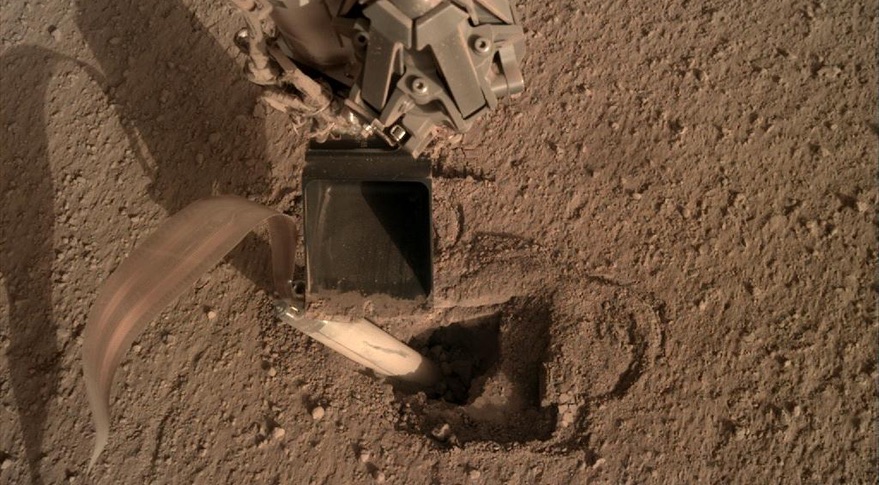WASHINGTON – After nearly two years of struggle, NASA has abandoned efforts to deploy a heat flow probe to the InSight Lander on Mars.
In a statement released on January 14th, NASA said that a recent attempt to “knock the mole” into the surface of Mars on January 9 failed to make any progress. The mole performed 500 hammer blows, trying to push itself to the surface, but it stayed in place only 2 to 3 centimeters from the surface.
“We’ve given everything we have, but Mars and our heroic body are still incompatible,” said Tilman Spoon of the German space agency DLR, the principal investigator of what is officially known as the heat-flow package and physical properties (HP3). ), In a NASA statement.
HP3 is designed to penetrate up to five meters into the surface and collect data on heat flow from inside Mars. The probe placed the instrument package on the surface in early 2019, shortly after Insight landed on Mars in November 2018.
But the probe Shortly after the knocking process began, I encountered problems, When the mole stopped about 30 cm at the surface. Scientists initially speculated that the probe had collided with rocks or a hard layer below the surface.
The device team later decided that the problem was the lack of friction between the probe and the surrounding regolith, which caused the mole to bounce as it hit, holding it in place. At times, the mole appeared to be partially retracting from the hole.
Subsequent efforts included moving the device’s casing across the surface, to reveal the mole emerging from the hole. Spacecraft controllers used the scoop at the end of the landing craft’s robotic arm to press down on the mole to prevent it from recoiling, restrain regolith around the hole, and also to fill in the widening hole so the mole gained more friction.
Meanwhile, these efforts succeeded in getting the mole completely below the surfaceAnd, covered with a few centimeters of regolith, additional road efforts failed to make any progress, leading to the decision to leave the mole in place. Project scientists concluded that the soil at the InSight landing site had properties different from those seen by other landers, which were used to guide the design of the device.
“We are very proud of our team that has worked hard to deepen the InSight mole on the planet. It was amazing to see them discover problems from millions of miles away,” said Thomas Zurbuchen, NASA’s Associate Director for Science, in the statement. At NASA – we have to push the boundaries of technology to see what works and what doesn’t. “
The decision to stop spreading the mole came less than a week after the agency announced it was extending the InSight mission until the end of 2022. At the time, NASA said that the extended mission “may continue to spread (with low priority)” from Mole, but it has not been discussed how long it will last. These efforts.
InSight’s other major seismograph instrument continues to do well, measuring Martian earthquakes. “The expanded InSight mission will focus on producing a long-term, high-quality seismic dataset,” NASA said in its January 8 announcement of the expanded mission. With efforts to deploy the Mole now finished, the spacecraft will use its robotic arm to partially bury the cable between the seismometer and the lander, reducing thermal noise in its data.
InSight also has a tool that collects weather data, which will keep running during the extended mission.
Although the mole failed to penetrate into the surface, NASA said it was still providing useful engineering data that could be used for future missions that need to be drilled into the surface. Although no such missions are now in development, NASA anticipates future missions, both robotic and human, using drills to investigate subsurface, including access to subsurface ice deposits.
“Fortunately, we learned a lot that will benefit future missions trying to dig into the ground,” Spoon said.

“Appassionato di alcol. Piantagrane. Introverso. Studente. Amante dei social media. Ninja del web. Fan del bacon. Lettore”.

